What are the best Metroidvania games on PC? With mechanics that have spread to all genres, few games beat a sprawling Metroidvania. Mostly 2D with some straightforward combat, tricky platforming, and light RPG mechanics, a Metroidvania demands you use all the abilities at your disposal to explore castles, alien-infested planets, whimsical forests, and so on.
Nintendo’s Super Metroid and Konami’s Castlevania: Symphony of the Night popularized the Metroidvania, but the genre has come into its own since these inaugural titles. While many of the best Metroidvania PC games try to recapture the spirit of their forebears, others expand into new territories by incorporating mechanics from pinball and soulslikes. The result is a dynamic genre that offers a wealth of familiar and fresh experiences – some recent, many of them cheap, and a few of them some of the best PC games ever made.
The best Metroidvania games on PC in 2024 are:

Crypt Custodian
Crypt Custodian is the next whimsical Metroidvania game from solo developer Kyle Thompson, the creator behind 2022’s Islets. This time, we trade an airship and island living for a spring clean in the afterlife. Mischievous feline protagonist Pluto finds himself bereft of his nine lives and banished from the afterlife’s palace after a spate of classic black cat behavior. His punishment? The thankless job as the afterlife’s eternal janitor, with little more than a broom to defend himself. Crypt Custodian delivers the usual Metroidvania fare of dungeons, bosses, and puzzles, but Pluto’s fellow ‘bad’ ghosts steal the show with their silly dialogue and charming designs. Explore an expansive map, rally your ghost pals, and find a way back into the palace for a well-earned cat nap.

Nine Sols
Red Candle Games has taken a sabbatical from crafting controversial horror games with Nine Sols, a “Taopunk” Metroidvania that’s as beautiful as it is brutal. Embark on a bloodsoaked journey of revenge as Yi, a vulpine antihero who must master the way of Tao to defeat the eponymous Nine Sols. Engage in Sekiro-style combat that favors deflection over brute strength and explore an intricate, hand-drawn fantasy world full of secrets and challenges in equal measure. Nine Sols is the blend of Sekiro and Hollow Knight that we’ve all been waiting for, with complex characters, lore, and boss fights to match. If you’re still holding a candle for Silksong, Nine Sols is the perfect alternative.
Animal Well
Featuring dimly lit pixel-art environments that seem welcoming initially, Animal Well is surprisingly brutal at first as you quickly learn that the game will not hold your hand. There aren’t any text prompts to help you out with puzzles, and you won’t spot any obvious signs to show you where you should explore next. Equipped with nothing but your platforming abilities and your puzzle solving skills, it’s up to you as this mysterious yellow blob to uncover all of the secrets in the well.
This Metroidvania expects a lot from the player, but in return you’re treated to a wonderful world filled with animals that need saving, puzzles that need solving, and bosses that need defeating. Give our Animal Well review a read to see exactly what we thought of this excellent indie game.

Pseudoregalia
A product of the Metroidvania Month 19 game jam, Pseudoregalia is a criminally underrated 3D Metroidvania that takes the parkour system from Prince of Persia and transposes it onto a surreal, dreamlike world reminiscent of classic games on the PS1 and N64. You are Sybil, a goat-bunny-cat lady armed with a sword and a powerful pair of hind legs that can propel you through Pseudoregalia’s open-ended levels and dance around enemies. However, half-hatched eggs, living armor, and spiked wheels aren’t the only things Sybil has to worry about. There are also NPCs to meet, puzzles to solve, and abilities to unlock along the way. Pseudoregalia will only take you at most a few hours to complete, but don’t let that put you off. More indie than indie, this short experience is designed by Metroidvania fans for Metroidvania fans and doesn’t outstay its welcome.
Prince of Persia: The Lost Crown
Not only one of the best new games, but one that our Prince of Persia: The Lost Crown review would state is one of the best Metroidvania games, too. Prince of Persia is known for its time-twisting powers, and The Lost Crown is no different; become more powerful as you journey, and attempt to overcome some seriously difficult platforming sections with an increasing range of abilities – it’s standard Metroidvania stuff, but done very well. It’s gorgeous, beautiful, and has a lovely little story that helps you barrel along, just don’t forget to pick up all of the Prince of Persia Xerxes Coins while you’re out in the world.

Tunic
Tunic dispenses with the classic 2D Metroidvania format for an isometric view of a whimsical fantasy world ripe for discovery. You are a small fox armed with a sword and shield to defend yourself against the hostile inhabitants lurking within the dense forests and dark catacombs you’ll explore on your travels, though you’ll need more brains than brawn if you want to solve the puzzles that block your progress.
Tunic takes a ton of inspiration from Legend of Zelda, but all the hallmarks of a classic Metroidvania emerge as you slowly reconstruct the in-game instruction manual. The individual pages of this sacred tome are scattered to the winds, and piecing it together reveals secret locations, hidden techniques, and the all-important map to aid your exploration. Your adventure takes you to the highest peaks and the lowest depths of this long-lost land, and the wonder and mystery earned Tunic a rightful spot on the PCGamesN GOTY 2022 shortlist. Solo developer Andrew Shouldice has even teased that a Tunic sequel might be on the cards.

Carrion
Take a pixel-y blob monster, let it loose on a facility full of screaming scientists, and watch as it mercilessly devours them. That’s the basic premise of Carrion, a reverse-horror Metroidvania that requires you to escape from said facility as said pixel-y blob beasty. Of course, there’s the usual suite of DNA-splicing upgrades to make the web-like creature even more proficient at devouring and escaping, as well as a number of puzzles to overcome.
Gory and grotesque, Carrion is a blood-stained unicorn within the genre, as for once you get to play the bad guy… blob… splodge. The upgrades themselves are as gnarly as expected, granting you the abilities to directly control humans, morph into a swarm of worms to navigate tight spaces, and fire out fleshy harpoons that snag their unsuspecting victims. With each new ability, the monster grows larger – a bundle of eyes and mouths and tendrils. It’s amazing. When you get stuck into Carrion, we’d recommend keeping a fan-made Carrion map with you – the base game doesn’t include one for some reason, and it’ll save you lots of needless backtracking.
Dead Cells
From its inauspicious beginnings as an early access indie game, Dead Cells is now considered a titan among Metroidvania games. This is in part thanks to developer Motion Twin’s receptivity to fan feedback and trove of content updates. However, Dead Cells also takes its cue from roguelike games to inject it with a replayability that many story-driven Metroidvanias lack. As a failed alchemical experiment intent on escape, you are functionally immortal, but the corpses you inhabit are less so. Each run takes you from the confines of a dank prison cell and across an ever-changing castle full of traps, guards, and ledges.
This cursed castle’s biomes are ripe for exploration, full of weapons and abilities to discover as you mutate and grow. However, molding yourself into a deadly warrior isn’t without peril. A gauntlet of bosses block your progress, and death sends you back to square one. Dead Cells is undeniably more challenging than some other Metroidvanias on this list, but the satisfaction of overcoming a fearsome foe puts it in the ballpark of the best soulslikes while never straying too far from what we love about Metroidvanias: expansive exploration, perilous platforming, and responsive combat.
Blasphemous
Catholic horror and Metroidvania mechanics meet in Blasphemous, an Andalusian nightmare cooked up by Seville developer The Games Kitchen. Its punishing soulslike combat is as much an exercise in self-flagellation as its story, which follows a nameless Penitent One on their quest to liberate the harrowed land of Cvstodia from The Miracle. This omniscient force is a curse on Cvstodia’s inhabitants, inflicting them with grievous mutations and twisting them into horrific creatures.
Blasphemous is a Metroidvania that’s not for the faint of heart, but its non-linear world is a standout in its genre. Fearsome bosses pulled straight from Spanish art, history, and culture stand between you and The Miracle, with only the Mea Culpa blade and a handful of relics, rosary beads, and prayers to keep you from a premature death. In fact, Blasphemous left such a deep impression on the Metroidvania genre that our Blasphemous 2 review finds its sequel unable to clear that extraordinarily high bar. Blasphemous will have you begging for mercy and praying for victory in equal measure.
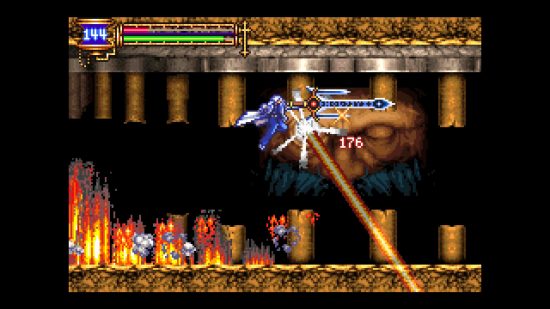
Castlevania Advance Collection
While you can’t get Castlevania: Symphony of the Night on PC, you can get three amazing Metroidvania games originally released for the Game Boy Advance: Castlevania: Circle of the Moon, Castlevania: Harmony of Dissonance, and Castlevania: Aria of Sorrow. Koji Igarashi, who is considered one of the fathers of the genre, took the reins of the Castlevania series throughout the 2000s, and had a hand in all three games, making them definitive Metroidvania experiences that you really shouldn’t miss – especially considering the package is inexpensive and provides a couple of dozen hours of Dracula-hunting fun.
Each game has its unique take on magic and abilities. Circle of the Moon has a staggering amount of magical spells and combinations with its Dual Set-up System. Harmony of Dissonance lets you combine Sub-Weapons – think throwable axes and the like – with spells. Finally, Aria of Sorrow allows protagonist Simon Cruz to capture monsters’ souls, thus gaining their abilities.
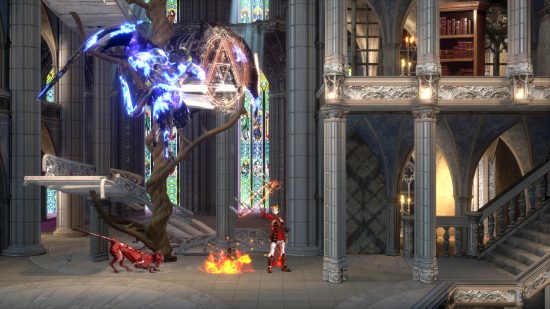
Bloodstained: Ritual of the Night
When Ken Igarashi left Konami, he eventually formed ArtPlay, and with it, crowdfunded a spiritual successor to Castlevania: Symphony of the Night. In the appropriately titled Bloodstained: Ritual of the Night, you assume the role of a young Shardbinder named Miriam instead of someone related to either Dracula or the Belmonts. Like other Castlevania games, Miriam explores several dark fantasy locales while gaining powers (Shards, in this case) from monsters, finding new equipment, and gaining new abilities to explore deeper and deeper into the Hellhold. It draws a few late-game surprises from its direct inspiration, making it the next best thing to a Symphony of the Night remake and a great modern Metroidvania.
Ritual of the Night also has two retro-inspired prequels called Bloodstained: Curse of the Moon and Curse of the Moon 2, though they’re not Metroidvanias. Instead, they’re linear action platformers like the original Castlevania, yet they’re still great fun regardless.
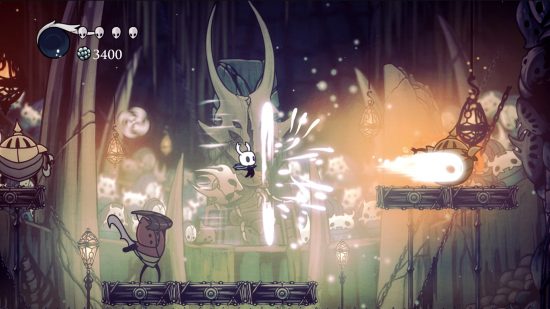
Hollow Knight
“Where’s Silksong?” has become a meme in most gaming spaces, as it’s a long-anticipated sequel to quite simply one of the best indie games ever made: Hollow Knight. A Metroidvania in every sense of the term, also pulls from soulslike games to create a more intense atmosphere. Taking the role of the Knight, you explore Hollownest and all the horrors it holds, slowly unlocking new abilities – from an extra jump to a crystal that launches the Knight forward at alarming speeds – and discovering the world’s dark history. It’s one of the longer Metroidvanias too, clocking in at upwards of 40 hours or more, depending on how well you handle the difficult bosses spread throughout.
To say the Hollow Knight Silksong release date is the most anticipated Metroidvania in history is likely an understatement, and if you haven’t played the original yet, you can’t go wrong delving deep into Hollownest.
Yoku’s Island Express
It turns out that creepy crawlies and Metroidvanias are a match made in heaven, because Yoku’s Island Express is next up on our list. This sweet little pinball platformer charts the adventures of the eponymous Yoku, an adorable dung beetle who arrives on the sunny shores of Mokumama Island to take over as the resident postmaster. The island is awash with secrets, stories, and even boss battles, but they all pale in comparison to the unnatural slumber of the island’s deity, and it’s up to Yoku to root out the cause.
The unlikely marriage between Metroidvania and pinball mechanics in Yoku’s Island Express puts a whole new spin on standard 2D platform games. Yoku might be small in stature, but he makes up for it with the pinball strapped to his middle, which propels him through the open-world game via a series of flippers, bumpers, and other pinball machine elements seamlessly interwoven through Mokumana Island’s hand-painted environments. Whether it’s the highest heights or the lowest depths, there’s nowhere this plucky little postmaster can’t reach.
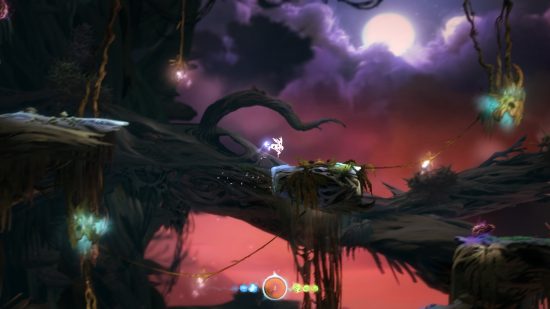
Ori and the Will of the Wisps
Right up there with Hollow Knight, Ori and the Will of the Wisps is one of the best Metroidvania games ever made. Rather than starring a sword-wielding hero adventuring through a demon-filled castle, you take control of Ori, an adorable fox-like creature as the little guardian spirit journeys to the region of Niwen.
Your main objective is to save your owlet friend and bring it back to its family, but you soon end up on a quest to restore the land back to its original form and learn about Ori’s destiny. Featuring a fully orchestrated original score, amazing hand-drawn art, and one of the best platform-heavy Metroidvania experiences around, with tons of interesting areas to explore and hidden items to find. Check out our Ori and the Will of the Wisps review to see what we thought of the game.
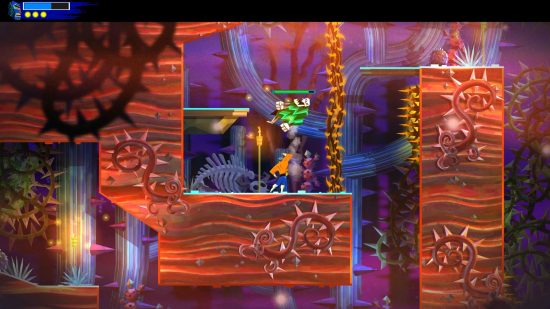
Guacamelee 1 & 2
By far the most colorful and hilarious Metroidvania, the first and second Guacamelee pull from Mexican folklore instead of vampires and demons. You control a luchador named Juan Aguacate. However, it still features the same core you’d expect in a Metroidvania: collect abilities – this time color-coded – that work in both combat and during traversal of the vividly rendered magical Mexico. Juan can also turn into a chicken, which, you know, is awesome.
The second game picks up right after the first, with an out-of-shape Juan having to relearn his abilities as he deals with an evil luchador from a darker timeline where he failed in the first game. Playing both isn’t quite a necessity – especially because the sequel improves upon the original in every way (the chicken form even gets an expanded move set) – but if you want to see all this colorful and hilarious world has to offer, play both.
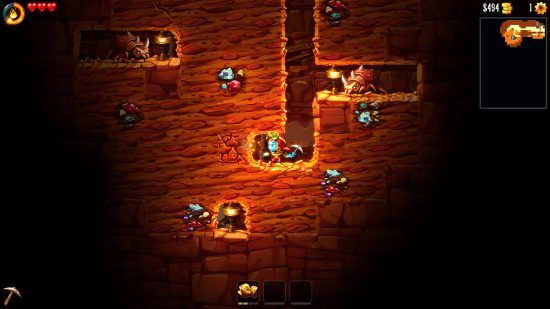
SteamWorld Dig 2
The SteamWorld games are criminally underrated. From RPGs to deck builders, developer Image & Form’s SteamWorld covers a lot of genres, including SteamWorld Dig and SteamWorld Dig 2 which have strong Metroidvania influences. The Dig series plays with the standard Metroidvania formula by having you dig your way through the map, revealing resources, enemies, and abilities that help you traverse and dig deeper and deeper, creating an addicting gameplay loop.
While the first game is great on its own, the sequel improves upon it, and the story isn’t that important to get a hold of – so starting with the second won’t set you back. More importantly, the world isn’t randomly generated like the original, giving it a more hand-crafted vibe necessary to make a Metroidvania truly shine.
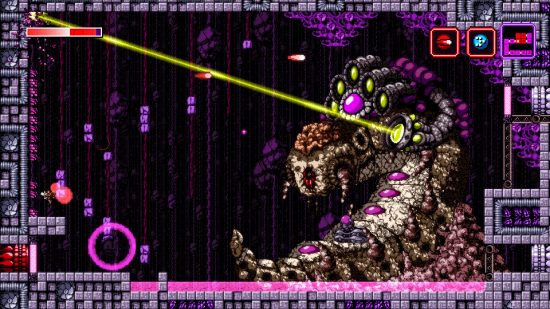
Axiom Verge
The most directly inspired by Metroid on this list, Axiom Verge takes retro-style pixel graphics, and a strange alien planet, and combines both with a great set of weapons and abilities to make a familiar adventure for fans of Samus Aran. The weapons in particular stand out in their creativity, and over dozens of hours, you’ll amass an impressive and creative array. This, in turn, gives Axiom Verge a great sense of character progression, in terms of both traversal and combat prowess against some truly fun bosses.
Axiom Verge 2, while also a Metroidvania, places a greater emphasis on environmental puzzles by allowing you to shift into an alternate dimension called the Breach; however, fans of the original are split on which is better – regardless, both are great Metroidvanias and worth your time.
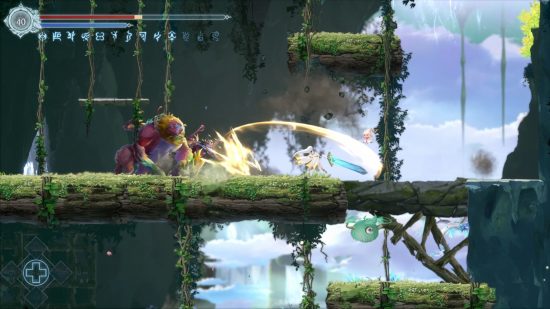
Afterimage
Want more Waifus in your Metroidvania games? Because Afterimage has you covered – with a pretty good fantasy labyrinth to explore along with it. Like Ori and the Blind Forest, the world here is gorgeously rendered with hand-drawn art, making Afterimage a treat just to explore with tried-and-true Metroidvania mechanics: air dashes, double jumps, and so on. It’s a beefy game, too, running upward of 40 hours to explore every nook of Engardin.
Other than Afterimage’s visuals, the simple but satisfying combat against a staggeringly large bestiary makes it one of the better Metroidvania games released within the last year if you’re looking for something fresh – just don’t expect a sensical story to go along with all the anime girls.

Ender Lilies: Quietus of the Nights
Also heavily inspired by Symphony of the Night, Ender Lilies: Quitus of the Nights – notice the similar title? – presents a darker tale with a rather helpless young girl named Lily as the protagonist. But don’t worry, in true Metroidvania fashion, Lily gains the abilities of those she defeats, increasing her repertoire of moves both in and outside of combat. Beginning with the spirit of a simple swordsman, Lily soon becomes a force to be reckoned with as she purifies the land.
It also has some of the best music in the genre, utilizing a piano-heavy soundtrack that adds to the somber adventure. It may also be the most underrated Metroidvania on this list.
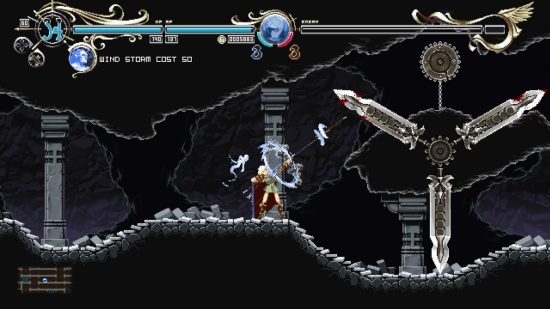
Record of Lodoss War: Deedlit in Wonder Labyrinth
Yes, that’s the title of a video game you can play. It comes from Record of Lodoss War, a somewhat well-known series of fantasy novels, anime series, and video games created by Ryo Mizuno, who also had a hand in Deedlit in Wonder Labyrinth. Deedlit is the name of the Elf protagonist the game stars, and don’t worry – you don’t have to be familiar with Mizuno’s other work to get your money out of the Metroidvania take on his fantasy world, despite much of the story leaning into fan service territory.
Deedlit in the Wonder Labyrinth, like most games on this list, wears its Symphony of the Night inspirations on its sleeve: Deedlit even moves as Alucard does. It features a fluid pixel aesthetic that’s a joy to look at as you solve environmental puzzles, wield daggers and bows, and cast elemental spells.
With a bustling Metroidvania indie scene, there are many more great Metroidvania games on PC, but for our money, these are the best of the bunch. Want to know more about upcoming Metroidvania games? Check out our coverage of Hollow Knight: Silksong. Alternatively, the best indie games is your next stop for experimental genre mash-ups.

 2 months ago
104
2 months ago
104

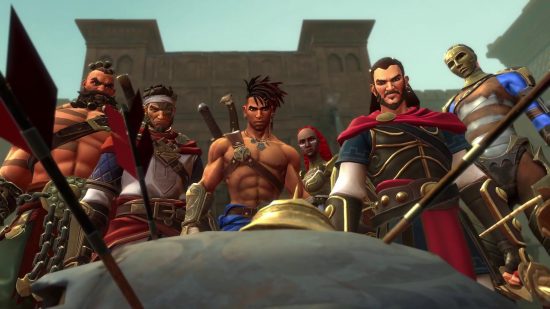


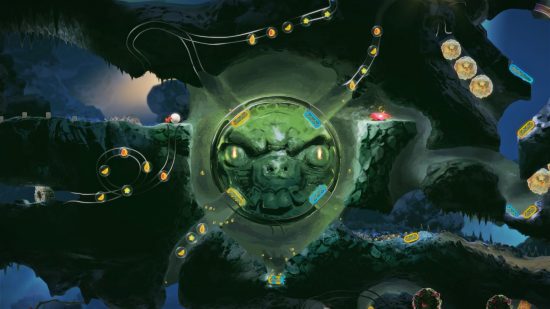





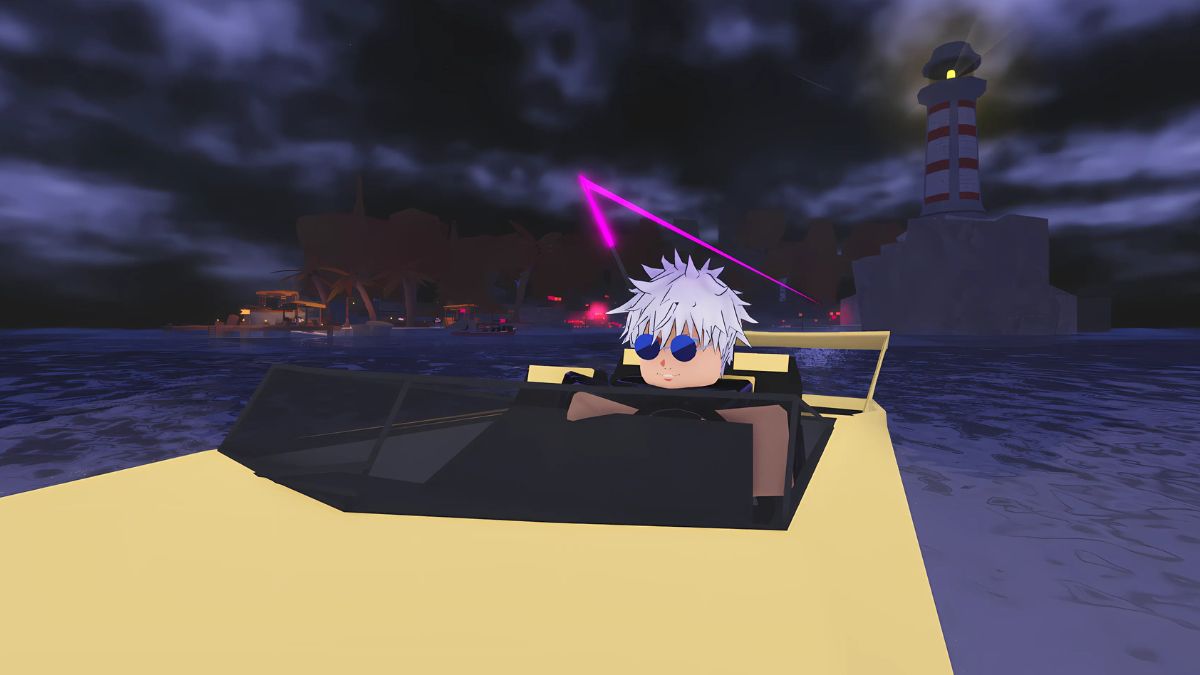
![Anime Reborn Units Tier List [RELEASE] (November 2024)](https://www.destructoid.com/wp-content/uploads/2024/11/anime-reborn-units-tier-list.jpg)

